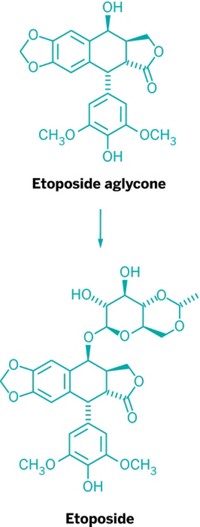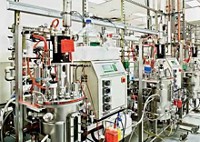Advertisement
Grab your lab coat. Let's get started
Welcome!
Welcome!
Create an account below to get 6 C&EN articles per month, receive newsletters and more - all free.
It seems this is your first time logging in online. Please enter the following information to continue.
As an ACS member you automatically get access to this site. All we need is few more details to create your reading experience.
Not you? Sign in with a different account.
Not you? Sign in with a different account.
ERROR 1
ERROR 1
ERROR 2
ERROR 2
ERROR 2
ERROR 2
ERROR 2
Password and Confirm password must match.
If you have an ACS member number, please enter it here so we can link this account to your membership. (optional)
ERROR 2
ACS values your privacy. By submitting your information, you are gaining access to C&EN and subscribing to our weekly newsletter. We use the information you provide to make your reading experience better, and we will never sell your data to third party members.
Biological Chemistry
Engineered microbes make ‘natural’ colorants
Four engineered bacteria cooperate to synthesize possible replacements for artificial colorings
by Stu Borman
June 21, 2017
| A version of this story appeared in
Volume 95, Issue 26
Relay

Source: Adapted from mBio
These days, some consumers won’t settle for artificial colorants in their foods and cosmetics. Companies are responding by looking for “natural” alternatives. Anthocyanins are red, purple, or blue plant pigments that could serve as replacements for dyes such as FD&C Red No. 40, which many consumers avoid. But although anthocyanins can be extracted from fruits and vegetables, those extracts are of variable quality and are expensive to purify.
To address these challenges, researchers led by Mattheos A. G. Koffas of Rensselaer Polytechnic Institute have devised a way to make anthocyanins by feeding glucose to a set of four strains of genetically engineered bacteria (mBio 2017, DOI: 10.1128/mBio.00621-17). The microbial system is the first to make anthocyanins and the first community of four cooperating, or cocultured, biosynthetic microorganisms. The previous record was a two-strain coculture.
By making anthocyanins from glucose, a cheap carbon source, the engineered bacteria might produce the natural products with more consistent quality and at lower cost than by plant extraction. Bacteria grow faster than plants and don’t produce natural product mixtures that require separation.
Koffas and coworkers focused initially on designing their microbial system to synthesize the anthocyanin callistephin. Because callistephin biosynthesis involves a large number of genes—15—the researchers weren’t able to engineer a single bacterial strain to make the natural product from glucose. But dividing the effort among four engineered Escherichia coli strains did the trick. Some of the 15 biosynthetic steps exist naturally in E. coli, but the researchers engineered genes for most steps. The biosynthetic system can also be adapted to make other anthocyanins.
The work shows “that bioengineers can use more than two strains to divide the biosynthetic labor, which greatly reduces the metabolic burden on each strain,” comments metabolic engineer Haoran Zhang of Rutgers University. “This provides a new perspective for engineering complex biosynthetic pathways when a considerable number of enzymes is involved.”
“Spatially separating genetic components in their own cellular modules also makes it easier to optimize each strain for its specific precursor and cofactor needs,” notes J. Andrew Jones of Hamilton College, first author on the study.
Gregory Stephanopoulos of Massachusetts Institute of Technology, a metabolic and biochemical engineering specialist, comments that the study shows that a coculture of four E. coli strains, each engineered to perform a different task in a biosynthetic pathway, can be stably sustained. “This work opens a new dimension for the application of metabolic engineering to the synthesis of complex molecules from renewable feedstocks,” he says.
Right now, the engineered organisms make only modest amounts of the anthocyanin product—concentrations in the 10 mg/L range. But the researchers hope to boost the system’s productivity to industrially useful g/L levels.
One of the study’s engineered strains already produces g/L concentrations of phenylpropanoic acids, such as p-coumaric and caffeic acids, as intermediates in the anthocyanin biosynthetic pathway. Phenylpropanoic acids, which have antioxidant, anticancer, and antifungal properties, are themselves potentially industrially useful products, the researchers note.




Join the conversation
Contact the reporter
Submit a Letter to the Editor for publication
Engage with us on Twitter